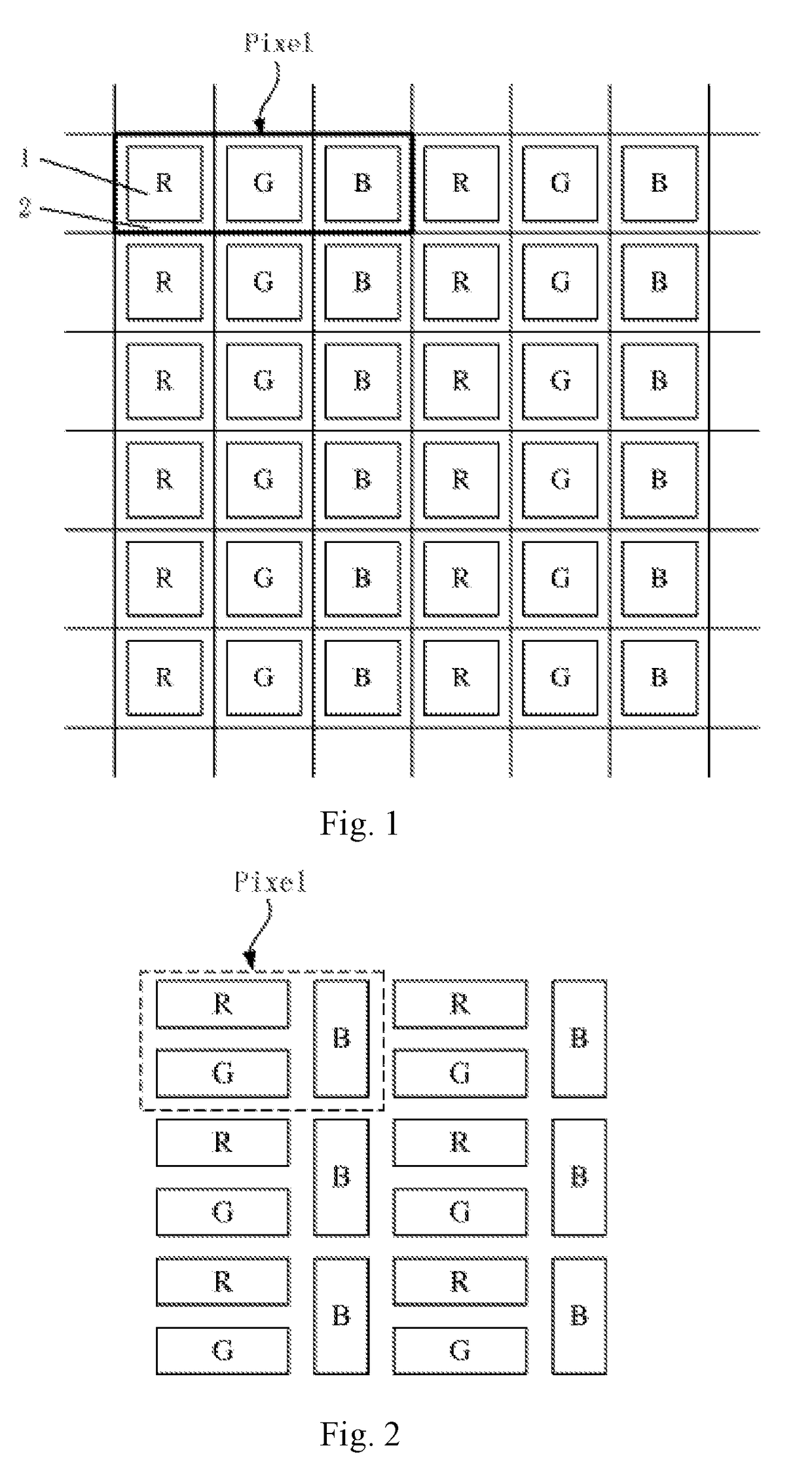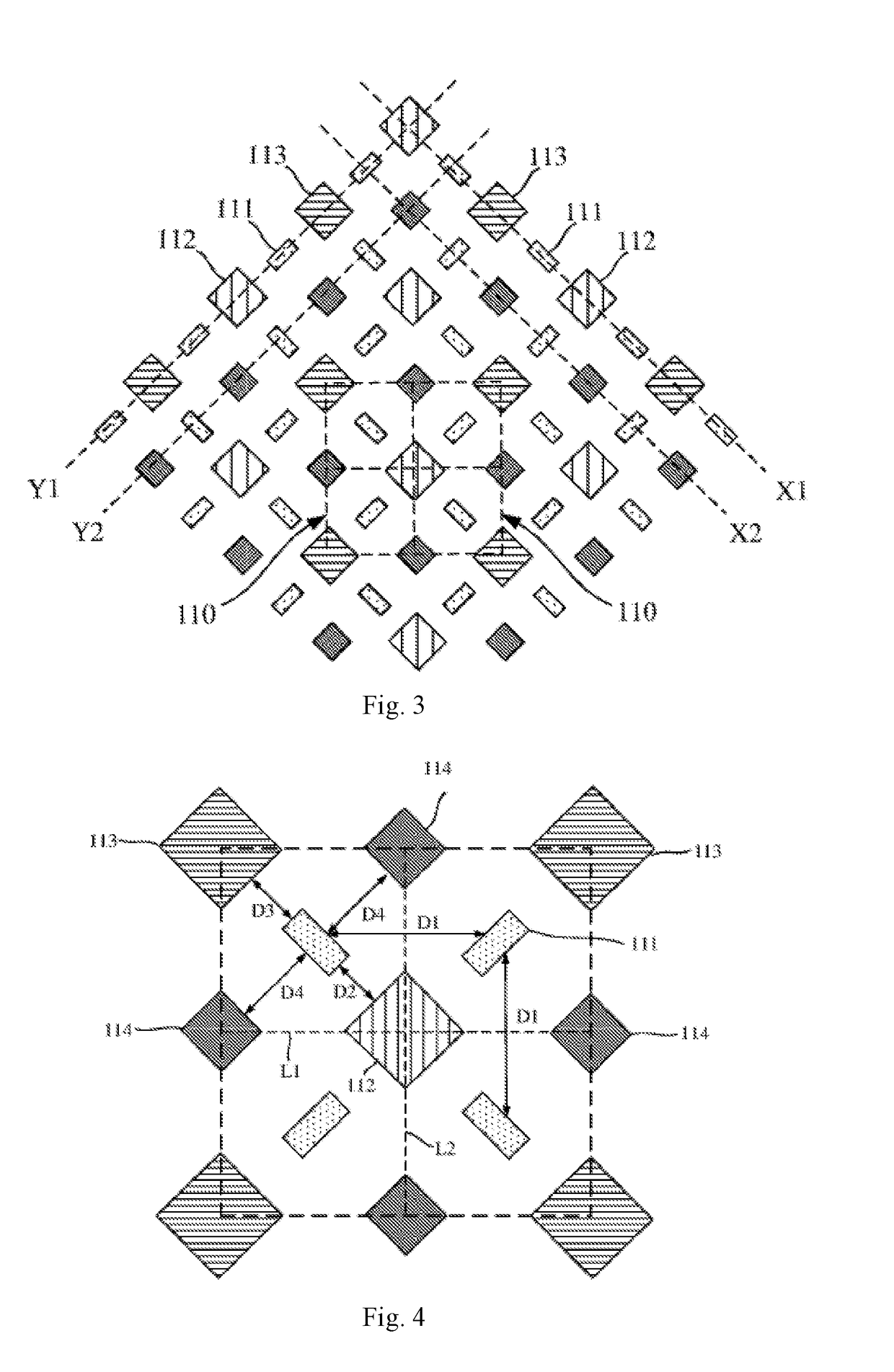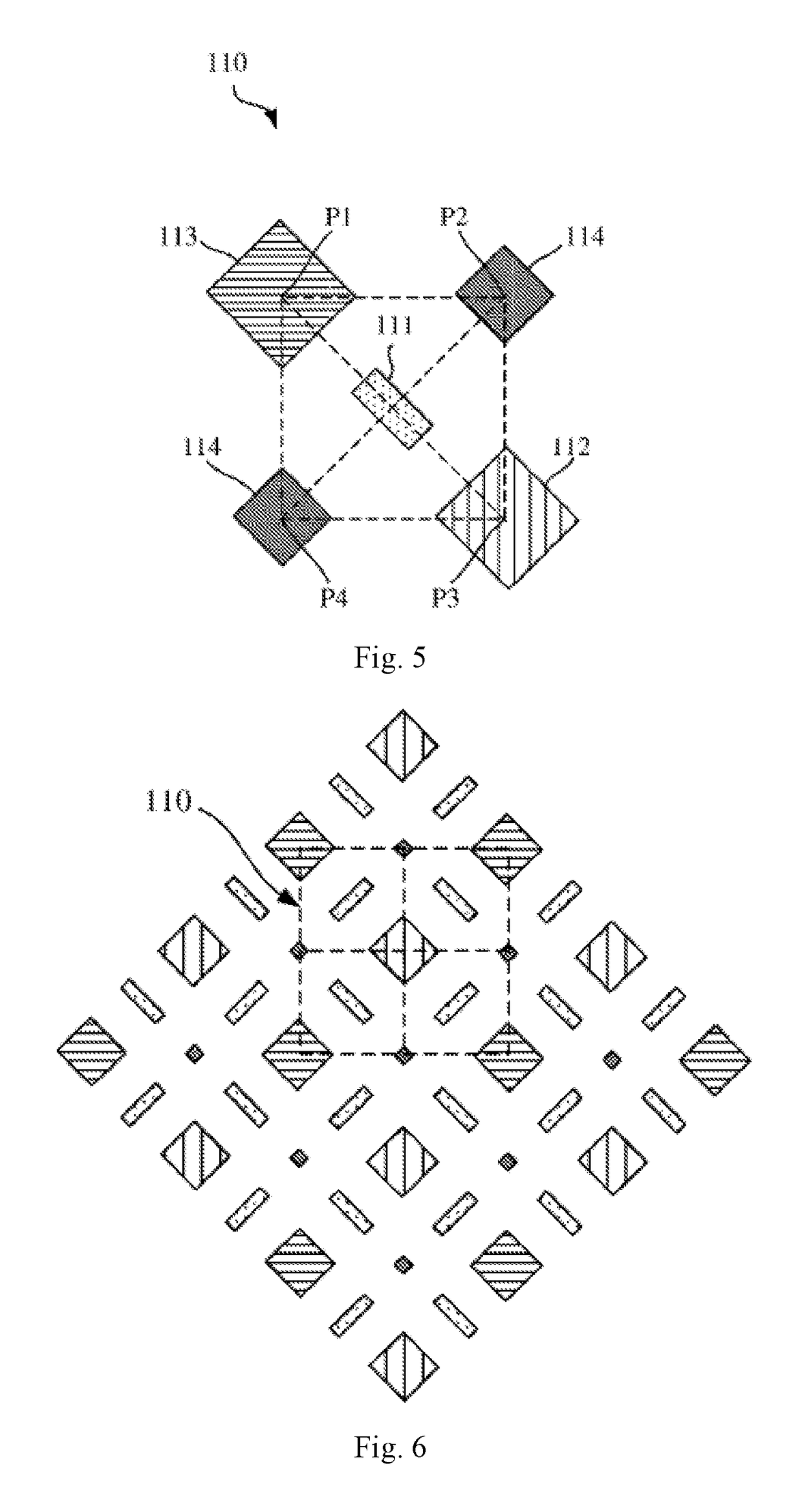Pixel structure and OLED display panel
a technology of pixel structure and display panel, which is applied in the field of display technology, can solve the problems of significant power consumption of display panel, and the inability of conventional rgb pixel arrangement to meet the increasingly high ppi (pixels per inch) requirements, so as to increase the design margin, reduce process difficulty, and increase the aperture ratio
- Summary
- Abstract
- Description
- Claims
- Application Information
AI Technical Summary
Benefits of technology
Problems solved by technology
Method used
Image
Examples
embodiment 1
[0034]FIG. 3 is a schematic illustrating part of a pixel structure in an OLED display panel according to a first embodiment of the present invention. FIG. 4 is a schematic illustration of four pixel units in the pixel structure of FIG. 3. FIG. 5 is a schematic illustration of one pixel unit in the pixel structure of FIG. 3.
[0035]As shown in FIGS. 3 to 5, the pixel structure of the OLED display panel includes a plurality of pixel units 110 arranged in an array, each comprising five sub-pixels including a first sub-pixel 111, a second sub-pixel 112, a third sub-pixel 113 and two fourth sub-pixels 114. The first sub-pixel 111 is dedicated to the specific pixel unit 110, while the second sub-pixel 112, the third sub-pixel 113 and the fourth sub-pixels 114 are common to the four adjacent pixel units. The first sub-pixel 111 is a primary display element and its PPI represents the PPI of the display device. The rest four sub-pixels all serve as secondary display elements configured only fo...
embodiment 2
[0045]FIG. 6 is a schematic showing part of a pixel structure in an OLED display panel according to a second embodiment of the present invention. FIG. 7 is a schematic illustration of four pixel units in the pixel structure of FIG. 6. FIG. 8 is a schematic illustration of one pixel unit in the pixel structure of FIG. 6.
[0046]As shown in FIGS. 6 to 8, the pixel structure according to this embodiment includes a plurality of pixel units 110 arranged in an array, each comprising five sub-pixels including a first sub-pixel 111, a second sub-pixel 112, a third sub-pixel 113 and two fourth sub-pixels 114. The first sub-pixel 111 is dedicated to the specific pixel unit 110, while the second, third and fourth sub-pixels 112, 113, 114 are common to the four adjacent pixel units.
[0047]This embodiment differs from Embodiment 1 only in that the short sides of the first sub-pixel 111 are parallel to the line segment connecting the centers of the second and third sub-pixel 112, 113, with its long ...
embodiment 3
[0049]FIG. 9 is a schematic showing part of a pixel structure in an OLED display panel according to a third embodiment of the present invention. FIG. 10 is a schematic illustration of four pixel units in the pixel structure of FIG. 9.
[0050]As shown in FIGS. 9 and 10, the pixel structure according to this embodiment includes a plurality of pixel units 110 arranged in an array, each comprising five sub-pixels including a first sub-pixel 111, a second sub-pixel 112, a third sub-pixel 113 and two fourth sub-pixels 114. The first sub-pixel 111 is dedicated to the specific pixel unit 110, while the second, third and fourth sub-pixels 112, 113, 114 are common to the four adjacent pixel units.
[0051]This embodiment differs from Embodiment 1 only in that the first, second, third and fourth sub-pixels 111, 112, 113, 114 are all squares and that the first, second, third and fourth sub-pixels 111, 112, 113, 114 are in exact symmetry with those in each adjacent pixel unit. Specifically, every two...
PUM
 Login to View More
Login to View More Abstract
Description
Claims
Application Information
 Login to View More
Login to View More - R&D
- Intellectual Property
- Life Sciences
- Materials
- Tech Scout
- Unparalleled Data Quality
- Higher Quality Content
- 60% Fewer Hallucinations
Browse by: Latest US Patents, China's latest patents, Technical Efficacy Thesaurus, Application Domain, Technology Topic, Popular Technical Reports.
© 2025 PatSnap. All rights reserved.Legal|Privacy policy|Modern Slavery Act Transparency Statement|Sitemap|About US| Contact US: help@patsnap.com



